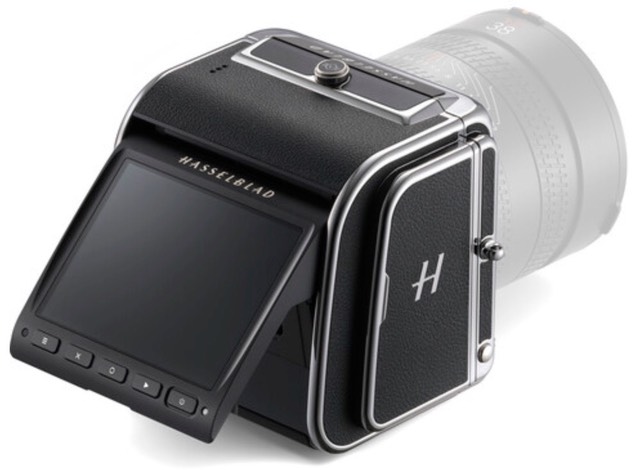I wrote earlier that the run up to CP+ was going to be full of announcements. First out of the gate is something that at first glance looks very familiar:

Even though it's quite compact, that's really two separate pieces you're looking at: a thin 907x "camera plate" containing pretty much just a mount, coupled with the new CFV 100C back that has all of the control functions. (You can also use older Hasselblad "backs" with the CFV 100C body instead of the 907x plate, but you lose autofocus and end up with a far bigger product with those.)
The CFV 100C packs quite a bit of high-end capability into a really small unit that weighs less than two pounds (27.5 ounces, or 780g with battery and card, but not lens). If you purchase this combination you'll likely be using XCD lenses, of which we currently have fourteen. While I mentioned card—one CFexpress Type B slot—the CFV 100C has 1TB of built-in storage. Out back you have that tilting touchscreen, at 3.2" and 2.36m dots. As usual with the classic Hasselblad designs, there are add-on grips and (Nikon style) hotshoe adapters you can add. But modern features are present, too, including 10-bit HEIF support.
Price for the combo is US$8200.
Commentary: Hasselblad went through a "not sure what to do next" period that included rebranding some Sony cameras with odd body style changes before DJI acquired them and settled them back down into what they do best.
Personally, I like this new camera better than even the X1D, as it returns to something that was valued in the studio (and to some degree, in the landscape photography world). That, of course, is not hiding the photographer behind the camera. In the studio with the old look-down finders, a Hasselblad user could stay in eye to eye contact with their subjects, only occasionally glancing down to check composition. If you use a camera with an eye level viewfinder in the studio, you have to take the camera from your eye and ready-to-snap position to engage your subject.
In terms of landscape work, I also prefer composing on a larger screen than a small screen at my eye. There's something about looking at a larger surface further from your eye that's more akin to the way a photo will eventually be hung on a wall that I can't quite explain, but I noticed back when we got Live View on our DSLRs. Moreover, I photograph really low much of the time with nature and landscape work, so having a screen that tilts up is preferable to me laying on the ground to see how my composition looks. Coupled with how small the CFV 100C is and it's big 100mp capture, I'll bet I start seeing more and more of these in the field.
